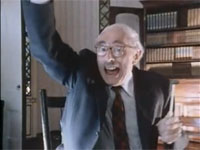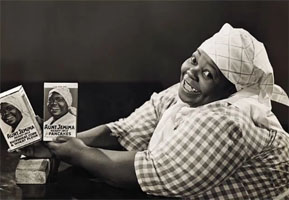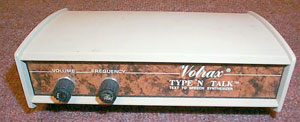disc 1
1. Prologue
- See also ARF: Notes & Comments.
Mark Pinske, January 23, 2003
The into to the "Mammy Nuns" song which is the very first thing on the Thing-Fish album was taken from the sound check at the [Stadthalle] in Vienna [June 28, 1982].
Frank started out by saying to me in the recording truck to go ahead and roll some tape because he wanted to lay down an idea for later.
He then did a guitar chord "dahnt da ta da da dahnt" on his guitar and clicked his footswitch for his "MXR" digital delay to loop. He then set his guitar on the stand and let it loop so I could record "with the PZM mics" the way it sounded going out into the room. I had the mics on stage pointing out toward the audience so you could hear the sound roll out from the stage into the room.
Frank loved the sound of empty rooms when there were no people in them. He conducted the band at that point and I think Tommy Mars (my roommate) took the first solo on the comper.
There is no artifictial reverb on start of that track at all. That was the sound of the room. There were many edits on the cut like there were on most cuts that took us all around the world.
Science!
Patrick Buzby, March 19, 2010
I don't know if this has already been discussed, but "science!" near the end of Prologue sounds to me like a reference to Thomas Dolby's "She Blinded Me With Science."
Thomas Dolby, "She Blinded Me With Science" (single, October 1982)
They appear wearing giant potato-head masks with human eyes set in randomly. The lower part of the mask is a custom-molded flexible duck-bill prosthesis. Their hands are Jolson-style white gloved monstrosities.
Al Jolson, "Mammy" (The Jazz Singer, 1927) (2:04 min.)
The 'MAMMY NUN' costumes resemble the habits of some unknown order from the neck to the waist, with skirts patterned after the blue & white checkered napkin material favored by the lady on the 'Aunt Jemima' Pancake Box.
Anna Robinson as Aunt Jemima, c. 1933-1951.
- See also "Electric Aunt Jemima" on Uncle Meat (1969).
2. The Mammy Nuns
- See also ARF: Notes & Comments.
Tan Mitsugu, October 29, 2008
The source for the guitar outro of Mammy Nuns is now identified as Genoa (7/5). About four seconds of guitar frenzy are edited out at 3:27.
4. Galoot Up-Date
- See also ARF: Notes & Comments.
Jes' follow de BLUE LIGHT, down de aisle to de potatoes durin' de intromissium . . .
BognarRegis, "Blue Light Question," Zappateers, September 24, 2018
K-Mart used to have a "Blue Light Special" held only for shoppers in the store at that moment. They had a blue police light mounted on a flagpole attached to a rolling bin. When it happened, an announcement would come over the store PA and people would be directed to the blue light where the special was being held. I always thought that's what the Thing Fish was referring to on the Thing Fish album.
5. The 'Torchum' Never Stops
- See also ARF: Notes & Comments.
Napoleon Murphy Brock, interviewed by Andrew Greenaway, April 29, 2002
The whole Evil Prince thing we developed together. We did that before he did Thing-Fish, because he hadn't even met Ike Willis yet. It wasn't even conceivable that here was a character that we could incorporate into an idea that he had that talked like Kingfish from the Amos & Andy Show. That was one of Ike's things, he had this deep voice and he used to mimic Kingfish. And Frank, anytime he saw something like that, he'd go "I can use this over here," and would structure something and utilise it to suit the new band's style. The whole idea of the Evil Prince came just by chance. We were doing a tour with Terry Bozzio, Roy Estrada and Andre Lewis. And one of the new songs we started doing was 'The Torture Never Stops', about this little cave where this mad scientist was doing all these nasty things. Now by this time, it was easy for me to elaborate on a concept. I would look at the lyrics and I'd know what he was trying to say. And I was spending a lot of time at second-hand clothing stores. So for each song I would get some clothes and develop a character. I would wear these white gymnastic pants with American flag suspenders. With these pants I could put on a jacket and a hat and I'd be a new character. Every jacket was a different colour. So while he was singing, "Flies all green and buzzin', in his dungeon of despair . . . " I would turn into this person who was a mad scientist that I found out later was called the Evil Prince.
[...]
Frank called me in 83 and he says "Listen, I'm doing this Broadway play called Thing-Fish, and I've got a part here that's perfect for you. Would you like to come down and audition for it?" I said "Sure, why not?" So I went down and said, "What's the part?" He says, "It's called the Evil Prince." And he told me all about it. And I said, "Oh, wait a minute—that's the character that we created when we used to do 'The Torture Never Stops'." He said, "That's right. You're perfect for the part." I said "Okay, well where's the music?" And he said, "Well, I haven't written it yet. I was waiting for you to come here." And he described the Evil Prince as this part time theatrical critic and mad scientist who was hired by the Government to create this vaccine, this stuff called Galoot Cologna. And what it really is is AIDS. [...]
And he said, "This is the character." Now Frank knew that I used to work in light opera and you know: light opera, fake opera singer—that kind of goes together. And he knows there had been times where I had used my little opera voice (demonstrates). So he knew I could do this before he called me, but he made it like "You want to try out for this?" But knowing all the time that he wrote it with me in mind. So after going through all the stuff together that we would do together in his studio—as far as singing, and things like that—he'd send everybody else home and say "Okay, come on, into my studio to the piano, and we're gonna do the song 'That Evil Prince'. He says "Bring your tape recorder" which I always did. And I put it on. And he says "Here are the lyrics, now I'm gonna play the notes. I'm creating it right now and I need you to tape it so you can learn it, and when you come back I'll have the tracks ready and you can sing on it." So he played one line at a time, then I'd record it. And that's how we did the whole song. And it's a very long song.
8. Mudd Club
- See also ARF: Notes & Comments.
QUENTIN ROBERT DE NAMELAND
Down there right now
- Quentin Robert De Nameland is mentioned in "The Adventures Of Greggery Peccary" on Studio Tan (1978) and Läther (1996); "Mudd Club," "The Meek Shall Inherit Nothing," "Clowns On Velvet" and "The White Boy Troubles" on Thing-Fish (1984); and chapters two, nine, ten and eleven on Them Or Us (The Book) (1984).
- See also Quentin Robert De Nameland drawing, FZ & GZ, 1970-1971.
9. The Meek Shall Inherit Nothing
- See also ARF: Notes & Comments.
Welcome to the QUENTIN ROBERT DE NAMELAND VIDEO CHAPEL OF ECONOMIC WORSHIP!
- Quentin Robert De Nameland is mentioned in "The Adventures Of Greggery Peccary" on Studio Tan (1978) and Läther (1996); "Mudd Club," "The Meek Shall Inherit Nothing," "Clowns On Velvet" and "The White Boy Troubles" on Thing-Fish (1984); and chapters two, nine, ten and eleven on Them Or Us (The Book) (1984).
- See also Quentin Robert De Nameland drawing, FZ & GZ, 1970-1971.
10. Clowns On Velvet
- See also ARF: Notes & Comments.
FZ, interviewed by John Swenson, Guitar World, March, 1982
I am going for optimum solutions to musical problems. And I think I am doing it the right way. I am providing good solutions to the empty canvas problem. Okay, I think other people are providing really boring solutions to the empty canvas problem. Really safe, really boring, but entirely competent solutions to the problem. To me, a lot of other people sound like clowns on velvet. You know what I mean? If you have a piece of black velvet and wanted to solve that problem you'd paint a nice clown on there. You know? Or you do one of those Keane paintings with the children with the large eyes. You know, somebody likes that stuff. And there it is for them. That is not my solution to the empty canvas problem. I am going for something else.
The Missing Al Di Meola Guitar Solo
- See notes on Al Di Meola & "Clowns On Velvet."
QUENTIN done booked in fo some clandestine recreatium wit a semi-deflateable 'woman of easy virtue' . . . (since dat be 'bouts de onliest kinda bitch be able to tolerate de muthafucker's hair spray!) [...]
QUENTIN know a good thing when he see one, an dis ugly rubber waitress look to him like a dream come true . . .
- Quentin Robert De Nameland is mentioned in "The Adventures Of Greggery Peccary" on Studio Tan (1978) and Läther (1996); "Mudd Club," "The Meek Shall Inherit Nothing," "Clowns On Velvet" and "The White Boy Troubles" on Thing-Fish (1984); and chapters two, nine, ten and eleven on Them Or Us (The Book) (1984).
- See also Quentin Robert De Nameland drawing, FZ & GZ, 1970-1971.



